
When the Omni is red, it means Critics and Ratings are wrong …
“Have the hard times of inflations, recession, high taxes, and the energy crunch got you down? Don’t fret! Just check your brains at the door and relax because the season of the “great escape” is on its way to your home screens. The macho Hollywood heroes of yesteryear, their derring-do, and adventures that brought the moviegoers of the ’30s and ’40s out of the Great Depression are back to uplift your viewing spirits with “escapism.”
“Any similarities between Raiders of the Lost Ark and several of the shows – like Tales of the Gold Monkey Bring ’Em Back Alive, The Quest, Knight Rider, and Voyagers! – Are purely intentional. Television thrives on duplicating and over duplicating success.”
“Voyagers! is a Time Bandits clone and cookie-cutter imitation. It’s a “futuristic rip-off of Around the World in 80 days.”
“You don’t have to be very suspicious to get the impression that NBC’s The Voyagers [sic], about a 10-year-old who travels through time with the help of a playful old “time cop,” owes something to the box office success of Time Bandits, do you?”
“Don’t think NBC didn’t notice that Time Bandits was a successful movie.”
Let’s Get Critical!
“Voyagers, NBC – Good idea, bad execution, horrible ratings. Soon, good riddance.”
Most TV critics, even in 1982, wrote in echo chambers, all agreeing that Voyagers! (1982) relied on too much activity related to violence and not enough historical accuracy. One critic complained that the Wright Brothers’ fighting over a woman, Spartacus and the slave revolt, and Babe Ruth going into Vaudeville, made the series a bore. He stated, “All of this may be fine as a classroom substitute for those dull history books, but as pure entertainment, the series is sorely lacking. There is no jeopardy. No suspense. Viewers are always too clearly aware that this is just an educational game for children and that no serious consequences will ever result.”
Indeed, Jeffrey Jones often set up historical exposition whenever they landed in a different time-zone. However, some critics probably didn’t realize how rigid the FCC was about television’s educational value. They didn’t report that from the start, the National Coalition of Television Violence (NCTV) banged on NBC’s door and breathed down James Parriott’s neck over the content in nearly every episode.

Voyagers! (1982) was “time-travel light” with straightforward storytelling regarding the past. The show didn’t focus on the universe-obliterating consequences of manipulating history, nor did it overly use parallel dimension theories. It didn’t delve too deeply into the ethical and moral ramifications of the Voyagers’ actions or others.
Voyagers! accomplished what it set out to do. It introduced history at face value in fun, non-threatening ways.
NBC touted Voyagers! (1982) as one of their new hits of the 1982 Fall television season, placing pictorial ads in TV Guide, the biggest selling magazine. However, critics noted the ratings told a different story when the show performed “dead last.” The second episode only jumped to 60th place from 63rd on the Neilson ratings. TV Guide derided NBC for false advertising.
“Did you realize that NBC’s Voyagers is one of the big hits of the fall season? Neither did I. But somebody forgot to tell the advertising department at NBC.”
“The simple truth is that NBC’s ads have declared all its new shows to be hits. It’s really too early to tell what shows will be hits, but we can be reasonably sure that Voyagers will not be among them.”
Television critics were usually short on time. The reviews posted by the premiere date of October 3, 1982, were based on the pilot episode or a seven-minute preview reel. Reviews must be written in advance when the networks flood viewers with over sixty new TV shows. Advance reviews aren’t an unusual practice. It s a boon for the networks and everyone involved to receive advanced and (hopefully) glowing praise.
A positive Pilot review ensures solid ratings for at least the first week. It doesn’t bode well if a network refuses to let critics see a preview clip or episode before the premiere. It conveys that they don’t have confidence in their show and may suffer behind-the-scenes difficulties.
Reviews Stuck in Automatic Mode!
A negative aspect of advance reviews is when critics print misinformation. The articles show they barely glanced at the episode before writing a quick summary to meet a deadline. Some critics said Bogg wears the Omni on his wrist. That idea only appeared in concept illustrations and first drafts of the pilot script. The Omni wristwatch was used in the Voyagers! Junior Novel but not in the filmed episode on TV. The Omni is hand-held and otherwise clipped to Bogg’s belt.
Critics said Jeffrey was ten-years-old. Less than ten minutes into the Pilot, his aunt Elizabeth exclaims she doesn’t want to be saddled with an eleven-year-old kid. One critic claimed two young boys time-traveled together. Standing over six feet with his deep voice, hairy chest, and chiseled abs, Jon-Erik Hexum must’ve eaten his Wheaties!
The worst criticism was that the Voyagers muck up and changed history. Meanwhile, Bogg clearly says in the Pilot and opening narration that a Voyager’s job is to fix history. Unless you apply the “Butterfly effect” to time travel, the Voyagers are not messing up the time stream by their physical involvement.
When a TV show’s bombarded with negative advance reviews, it’s a potential disaster that plummets the Pilot ratings because viewers may not even bother to tune in. On the other hand, it’d be hard for a critic to give rave reviews about a show watching just one snippet or episode.
“The series is very loose with history, and although it’s disguised as a kid’s show, it plays to adults. Scholastic Magazine is in on this thing with the producers, but kids would learn more by watching “60 Minutes.”
A professional critic may say only one episode is necessary to know a show’s value. But is it enough? How many shows in the 1980s started with awful critiques only to grow into bonafide hits for years? And how many unique shows like Voyagers! (1982) were forced into cancellation within one season or less?
A TV show can survive negative advance reviews, but ratings will make or break it. Voyagers! (1982) previews did not impress critics. A week before the premiere, it was deemed shoddy. It was predicted to be the first rating casualty of the fall season.
As early as April 1982, the critics slammed Voyagers! (1982) with full force using headlines like: “An early line on shows that are sure to fail” or “No new formulas since the beginning of ‘creation.’ Blurbs from critics that bragged they have 70% successful TV show predictions called the show a “likely failure.”
Voyagers! (1982) was presumed to fail along with Knight Rider (1982) and Square Pegs (1982). Meanwhile, Cheers (1982) and St. Elsewhere (1982) won rave reviews but lacked early positive ratings.
Knight Rider (1982) became a hit, running four seasons and making David Hasselhoff a bonafide star. Square Pegs (1982), a show about teens, only had twenty episodes. It introduced Sarah Jessica Parker, a future popular movie and TV star. Critics still acclaimed her layered performance in 1982 despite low ratings. For years, the TV shows Cheers (1982) and St. Elsewhere (1982) won Emmy awards and accolades. Many cast members went on to major award-winning acting careers in movies and other high-profile television projects.
One critic wondered why NBC dropped their Project Peacock children’s line-up in favor of Voyagers! (1982), claiming it had a time-travel plot they found ‘old-hat.’
Voyagers! (1982) followed themes similar to shows like The Time Tunnel (1966). The writers creatively added a beautiful time-travel device, had a child take the lead with superior historical knowledge, and made the adult protagonist a former pirate. The show was on its way to building fascinating mythology. Immediately after it went off the air, the critics still undermined it, but some noted its value.
From the Sci-Fi magazine Starlog
“Although the scripts were often less than thrilling and historical facts perhaps not always accurate, this lackluster series should be commended for one thing: surprisingly, it has prompted youngsters to read more about certain historical periods.”
Would it help if TV shows (or movies) aren’t given extreme pressure before the public sees them? Pre-release reviews influence the ratings, and the critics also change viewers’ minds that the series will be a perpetual failure. Today, the Internet is saturated with blogs, vlogs, and entertainment websites that spoil and critique TV shows weeks or months before they air. The studios usually encourage them with teasers and longer promotional trailers. They’re known to put out fake, even negative, leaks to create and gauge public interest. Reviews spread like wildfire, and continuous follow-up articles and spoilers pop up on social media and public comments.
Critiquing the Talent
The lead actors on Voyagers! (1982) surprisingly faced little criticism. Meeno Peluce was noted as a TV veteran at a tender young age.
“Not meant to be taken seriously, this is the kind of fantasy about time-travelers which could attract a strong young audience. Meeno Peluce, who was in Best of the West, again manages to play a kid without being offensive, something not frequently done by television small folk.”
Negative criticism mostly fell on Jon-Erik Hexum as the adult and newcomer with no television experience. A critic joked about his line delivery – “Jon-Erik Hexum says every line in a voice that should be reserved for singles bars and presidential processions.”
Jon-Erik was also accused of copying Harrison Ford; this time, it wasn’t Indiana Jones. Meeno also wasn’t spared a dig.
“Voyagers!” would have more appeal if Hexum would go easier on the Harrison Ford imitation. His dialogue (e.g., “Smart kids give me a pain” and “I’m a voyager kid, – sometimes you gotta bite the bullet”) borrows enough from Star Wars without Hexum’s zeal to ape Ford’s voice and gestures. Paluce [sic] is an adequate actor, but does not project a winning personality.”
Green-Light, Kid! They liked it!
Was there anyone out in the vast media wilderness that liked Voyagers! (1982) and saw its potential? In 1982, Jon-Erik Hexum and Meeno Peluce won the Golden Scroll Awards of Merit for “Outstanding Achievement in a Television Performance by the Academy of Science Fiction, Fantasy, and Horror Films.” The award is now known as “The Saturn Award” and marked its 46th year in 2021. The category Hexum and Peluce won has been discontinued.
The show had a cheerleader in Journalist Rick Sherwood, who’d praised it multiple times.
“Voyagers! – The best kids’ show to debut in 1982-’83 – returns to TV Sunday at 7 pm On NBC. Unfortunately, it won’t be around long. It wasn’t the quality of the show that killed this one. It was the quality of the competition. It was – and is again – up against CBS’s “60 Minutes,” the year’s most popular program. The show, which stars Jon-Erik Hexum and Meeno Peluce, gives viewers a cleverly camouflaged history lesson through its fantasy-adventure format. Too bad not enough families caught on.”
Journalist Richard M. Shull –
“If “Voyagers!” was a bad show, it would be easy to let it disappear. But it’s a well-done effort to entertain while administering some painless history lessons. It’s worth saving.”
Journalist Ben Steelmen from Wilmington Star-News (Morning Star in 1982) went so far as to interview teachers in his local North Carolina area.
“Despite its Hollywood touches, they said, “Voyagers!” sugar-coated history enough to get some slower pupils curious about what really happened and encouraged them to study further.”
Howard Rosenberg from the Los Angeles Times was enthusiastic about the premiere.
“The Voyagers” [sic] is a regular dream machine that pushes my Walter Mitty button, a show in the tradition of H.G. Wells and the recent movie “Time Bandits.” You can have some fun in this hour.”
Like Walter Mitty, maybe Jeffrey Jones heard “Ta-pocketa, pocketa, pocketa,” waking up from his pirate dream in the pilot episode. Rosenberg was one of the only critics to recognize the influence of Wellsian time-travel themes and gadgetry.
The Morning Call Television Editor Sylvia Lawler –
“An expensive outing and rousing high fantasy-adventure, especially for children. Thanks to a time-machine, “Voyagers!” focuses on one boy’s (Meeno Peluce) Walter Mitty day-dreams as it whisks him through history. It’s a fast-moving, colorful hour that teaches some as it goes. All in good fun.”
Feature Reviewer and Writer Al Carlson from the Springfield Leader gave glowing praise.
“NBC hits the jackpot for the third time with the premiere of “Voyagers!,” “Family Ties” (promising), and “Cheers” (A hit that will get better.).”
“NBC has provided two of the three new series which show signs of sustaining life. You can add to the list the surprisingly entertaining “Voyagers!” ”
Only two of the shows Carlson predicted remained NBC hits. Family Ties (1982) made viewers chuckle for seven seasons, and young fans particularly fawned over lead actor Michael J. Fox. Cheers (1982), with a strong ensemble cast of eccentric characters, poured its last beer after eleven years on the air in 1993. Voyagers! (1982) only achieved its popularity in syndication after the official 2007 DVD release.
“Mark down three pluses for “Voyagers!” The show mocks itself with gentle humor.”
Not many critics addressed the show’s humor, yet much was to be had. Bogg and Jeffrey took their job seriously but also engaged in witty banter. A sense of humor is crucial when dealing with unfortunate circumstances and hardships. Despite its historical nature and involvement in war-time events, Voyagers! (1982) couldn’t be all gloom and doom. It was created with children in mind, after all.
“Hexum is dashing as the roguish hero. Jones, as long as he is kept properly muzzled, is allowed to be a smart kid without becoming smart-alecky.”
Jon-Erik Hexum’s attractiveness couldn’t be denied, and the shade thrown at Jeffrey was accurate. Bogg had even called him a “smart mouth.”
“NBC promotes Voyagers! as a children’s show. But more than a few unwary adults will get hooked.”
“Voyagers! is a silly program. Once that is out of the way, one can sit back, relax, and enjoy this fantasy about an inept time-traveler and his young companion.”
Voyagers! (1982) was no more silly than the show that eventually took its spot on NBC. Manimal (1983) featured a crime fighter who transforms into different wild animals. The show’s special effects employed talented makeup artist Joe Blasco’s terrifying bladder technique. They were inspired by big-budget transformation styles from The Howling (1981) and American Werewolf in London (1981).
Educators understood the show’s primary intentions and appreciated that it encouraged students to learn independently. They saw beyond the entertainment value. Forty later, there wouldn’t be fan groups of grown adults who’d watched the series in childhood. No one would’ve created websites, shared photos, art, and videos. Podcasters wouldn’t bother discussing the show, and blogs like this wouldn’t exist. Why couldn’t naysayers see it, as one critic wrote, “ … off the wall and appealing in a light, goofy way?”
Despite Voyagers! (1982) simplicity, most critics seemingly lacked the time and imagination to absorb the concept. It’s one thing to discredit a show based on the acting, sets, or script. But it’s another to accuse the writers of “tampering with history.” The Voyagers existed to fix time anomalies. That was the crux of the series. If only the critics opened their minds and supported the show instead of tearing it down. Fans could’ve enjoyed more adventures as the writers created in-depth origin stories for the Voyager society.
The Rating Game
Formerly of the ABC network, Fred Silverman was president of NBC for a brief time from 1978-to 1981. Silverman, known as “Fast Freddie” and “The Golden Gut” for his extraordinary programming instincts, loved attracting large audiences, but NBC wouldn’t have it.
During his tenure, programming on NBC was in such flux that people called NBC the “Nothing But Changes” network. Silverman scrapped everything that didn’t break the top 20 within just four weeks, and viewers didn’t have a chance to even know a show existed. 1978-79 was known as NBC’s cursed and disastrous season. Only one show survived – the funny, contemporary, well-acted Diff’rent Strokes (1978).
How could viewers follow the cute “NB SEE US!” ad campaign when nothing came to air? Silverman couldn’t lift NBC from the third ranking between ABC and CBS.
Grant Tinker took over as NBC president in 1981. The new ad campaign boasted, “JUST WATCH US NOW!” and accompanied one of the most engaging theme songs ever.
Tinker proved methodical with programming. The network eased up putting shows on the chopping block too soon and tried not to let low ratings overly influence their decisions. The new tactic for networks was to stick with low-drawing shows. As a whole, NBC in 1982 pleased critics, but nobody was watching. NBC even turned to live theater presentations with award-winning directors, producers, and acclaimed actors like Henry Fonda, Sally Field, and Pearl Bailey.
“The 1982-83 season represents business as usual for secure ABC and CBS, but for NBC, plagued by low ratings for so long that a discernible, ratings, earnings, and credibility gap exists between it and the other webs, it’s a different and far more urgent matter.”
“NBC must show significant improvement or face the prospect that the persistent perception of the network as a loser will become a self-fulfilling prophecy of doom.”
Despite NBC’s volatile history, fans can be grateful for Voyagers! (1982) run. It appeared Tinker genuinely supported and defended the show. It may not have gotten near 20 episodes under Fred Silverman’s control, and an inferior series might’ve aired. In hindsight, that’s what happened when Monitor (1983), then Manimal (1983), replaced it for 1983. Both fared worse than Voyagers! (1982) ever did.
 Originally, Sundays at 7:00 pm belonged to The Powers of Matthew Star (1982). That production, which started filming in 1981, was delayed for one year when star Peter Barton was severely burned after falling backward onto pyrotechnics. Peter’s co-star, Louis Gossett Jr., was tied to a chair for the scene. He’d landed on Peter and pulled him away before he sustained more life-threatening injuries. Barton spent months recuperating and Voyagers! (1982) was given the time slot when they resumed shooting.
Originally, Sundays at 7:00 pm belonged to The Powers of Matthew Star (1982). That production, which started filming in 1981, was delayed for one year when star Peter Barton was severely burned after falling backward onto pyrotechnics. Peter’s co-star, Louis Gossett Jr., was tied to a chair for the scene. He’d landed on Peter and pulled him away before he sustained more life-threatening injuries. Barton spent months recuperating and Voyagers! (1982) was given the time slot when they resumed shooting.
Emmy Award Consideration
During premiere week, Voyagers! (1982) came in 63rd, the last place out of all the network shows. America wasn’t only watching news programs. They loved their soapy melodramas. Dallas (1978), Dynasty (1981), and Falcon Crest (1981) seduced nearly 60 million households during the closing week of November 1982. However, NBC came in third out of the “Big Three.”
Jon-Erik said of NBC and his show – “We’ve become known for shows like “Hill Street Blues” that don’t do all that well in the ratings but end up sweeping the Emmys. I understand “Voyagers!” has already been mentioned as an Emmy nominee for best set design and costuming, so it seems to be following in that same direction.”
Unfortunately, Voyagers! (1982) didn’t make it to the Emmys. Two other fantasy shows ended up on the ballot. CBS’ Wizards and Warriors (1982) swept up nominations for “Outstanding Film Sound Mixing,” “Sound Editing,” and “Costume Design.” ABC’s Tales of the Gold Monkey (1982) was awarded “Outstanding Art Direction.”
An Emmy consideration is still nothing to sneer at. Voyagers! (1982) employed high production values, and the costume department did an admirable job. In every episode, Bogg and Jeffrey wore the pirate outfit and red-striped shirt but made numerous costume changes to blend in with the time zones. The guest stars and extras needed their own period clothing. The elaborate set dressing on Universal Studios’ familiar backlot transported viewers to the past.
The Replacements
NBC ordered four backups to replace any show that failed mid-season. Casablanca (1983) adapted the classic movie and starred David Soul from Starsky and Hutch (1975) fame. It only had five episodes. The Second Coming (1982), with Anne Archer and Frank Converse as divorced parents who marry and blend their families, seemed derivative of The Brady Bunch (1969). It didn’t make it past the Pilot stage. NBC also ordered two comedies on tap; one would star Dabney Coleman, and another created by Hugh Wilson. He also produced the successful comedy WKRP in Cincinnati (1978).
Thankfully, Voyagers! (1982) wasn’t replaced early, but it remained trapped at the bottom of NBC’s barrel its entire run and was just four episodes shy of a full season. What caused its demise?
It’d been sucked into the black hole created by a CBS News Program. Nothing aired against it survived for long.
The Clock Ticked For Voyagers!
“The worst plight that could befall any television show is to be put opposite CBS-TV’s 60 Minutes.” – The New York Daily News.
“Another NBC show in jeopardy is “Voyagers!” the new Sunday night adventure series, which has been getting murdered in the ratings by CBS’ “60 Minutes.” There’s a strong possibility that NBC may reface it with its new weekly “NBC Magazine” series, hosted by Lloyd Dobyns, in early February, which would pit two magazines against each other. Hope NBC has better sense than that.”
In April 1983, NBC chose to put Monitor (1983) on Saturday nights between 10:00 and 11:00 pm. It replaced the poorly rated action series Gavilan (1982) (NBC’s version of Magnum, P.I.) starring Robert Urich.
Magazine programs were inexpensive to produce compared to prime-time adventure shows. An episode of 60 Minutes (1968) or other News Magazine TV shows reportedly cost between $300,00 to $400,000 per hour, while shows like Voyagers! (1982) reportedly ranged from $600,000 to $1 million per episode. Series production costs averaged up to $80,000 a day, whether or not the actors or film crew were present. Voyagers! (1982) averaged $700,000 per episode.
The television industry insiders warned that programs with the guts to air Sundays at 7:00 pm were on kamikaze missions straight to the bottom. It’d been deemed the “Bermuda Triangle hour” of television and a video “Death Valley.” An advertisement spot for Voyagers! (1982) threw shade at the competition by showing a hammer smashing a clock – “Break the habit.” The clock was 60 Minutes (1968) symbol.
60 Minutes (1968) Executive producer Don Hewitt joked about the Voyagers! (1982) advert. “But when the ratings were in, well, they broke the hammer.”
Journalist Al Carlson remarked, “NBC’s “Voyagers!” premiered to an audience of relatives and friends. “60 Minutes” buried “Voyagers!” in last place. “Voyagers!” should be Tinker’s first reclamation project. It has enough potential to deserve another time slot.”
60 Minutes (1968) host Mike Wallace surprised Ripley’s Believe it or Not (1968) host Jack Palance during a Spanish Inquisition segment when he appeared as the Grand Inquisitor. Wallace claimed he hitched a ride with the Voyagers to the 15th Century and refused to return home. “I like this!” He exclaimed.
If only he’d stayed in the past, Voyagers! (1982) might not have been canceled.
Lost Viewers?
Voyagers! (1982) received another setback when it lost a city full of potential viewers. In Philadelphia, PA, Voyagers! (1982) wasn’t given air-time for being a low-rated series. The Westinghouse Broadcasting Company, which controlled KYW TV, pre-empted many low-rated NBC shows even though KYW was NBC’s largest affiliate. This turned out to be the most drastic change for NBC and KYW.
The Station Manager, Chuck Gingold, simply didn’t like Voyagers! (1982) and wouldn’t put up money to air it. When families tuned in Sunday night on October 3, 1982, they saw Double Muppets, Hold the Onions (1982). The hour-long show with Miss Piggy, Kermit, and friends had locally produced openings and endings. Gingold aired Muppet reruns because the studio had already invested in them.
KYW 3 staunchly aired local TV programming, determined to get out of a ‘last-place’ rating grave. They’d consistently passed on airing low-rated NBC shows. When NBC made more successful programs in 1985, KYW 3 refused to broadcast them into the early ’90s.
Think of the Children!
Network competition aside, children’s programming took a hit in the early ’80s. Hannah-Barbera continued producing quirky cartoons for Saturday mornings and weekday afternoons but no longer dominated the animation market. Their control over children’s programming fell dismally from 80 to 20%. NBC’s Disney”s Wonderful World (1979) suffered through a 94-day Screen Actors Guild strike in 1980. The mouse failed against 60 Minutes (1968) and aired unoriginal material. With low ratings and 14 preemptions, Disney’s Wonderful World (1979) was canceled in 1981. NBC’s live-action dog series, Here’s Boomer (1980), failed. Project Peacock (1981), an anthology of children’s specials, won an Emmy award for Outstanding Children’s Programming with “Donahue and Kids Project Peacock.” That series went bust by 1982.
Parents desired to know about current world events with 60 Minutes (1968). Thousands of kids may have missed out because they only had one television set in the home or the ratings for Voyagers! (1982) weren’t tracked and counted by the Neilson numbers for the second set. Perhaps, the kids weren’t watching TV at all. Since 1976, children and adults have embraced a new entertainment form – The Home Video Game Console.
In the early 1980s, Atari dominated the scene for video games. Superior competitors all vied for sales until the video game crash of 1983. Voyagers! (1982) aired during that frenzy, so is it possible the time once spent watching the program might’ve been replaced with rounds of Donkey Kong, Super Mario Bros., and Burger Time? Japan dubbed the crash the “Atari Shock.” It lasted from 1983-to 85 because of market over-saturation. Many video game and home computer companies went bankrupt and disappeared.
Voyagers! Holds On
Despite what the critics said, Voyagers! (1982) was original and exciting television. It wasn’t born through big-name studios’ posterity known for children’s content like Hannah-Barbera or Disney. It was the “little show that could,” and Voyagers! (1982) deserved better ratings.
Time-travel shows are hit and miss on network TV. By the ’90s, science-fiction gained popularity again through syndicated television. The time-travel concept found success in movies and spawned popular franchises. Hundreds of stand-alone time-travel movies over the last 35 years spanned multiple comedy, action, fantasy, and horror genres. Time-travel became the Dues-Ex-Machina plot device for many films and stand-alone TV show episodes. Indie filmmakers make brilliant short-time-travel films and showcase them on Youtube. A hundred shows and cartoons were created since the early days of Captain Z-Ro (1956). Highly acclaimed international time-travel productions also attract millions of American viewers.
In a statement that was eventually proven correct, Jon-Erik Hexum told the Press – “They don’t really have anything to replace it with. This is a very expensive show. The general feeling around the network is why give a chance on an unproven, untested product when you already have something on that should work. The one thing this show has going for it is critical acclaim from the larger metropolitan newspapers. If they put a new show in our place, they have no guarantee it will do any better, and it will cost them more money.”
Within a month of its premiere, Voyagers! (1982) came last in the ratings three times and fourth from last once. “Cleo and the Babe,” the baseball episode meant to coincide with the world series, was ironically pre-empted. Voyagers! (1982) also contended with Football season against the newly minted USFL. The United States’s Foot Ball League was 12 teams with 600 college football players and excess NFL talent and athletes. Their games aired from March to June on ABC Sunday afternoons, but the Championship game was played in prime-time.
On December 9, 1982, NBC moved Voyagers! (1982) to a “Special” Friday night opposite The Dukes of Hazzard (1979). During a multi-million dollar lawsuit with Warner Bros. Television, Tom Wopat and John Schneider quit The Dukes of Hazzard (1979). Christopher Mayer and Byron Cherry replaced them.
The Dukes of Hazzard (1979) entered its fifth season and were added to the 8:00 pm time slot. Their ratings slipped to 23rd place without the original leads. Moving the show improved The Dukes’ ratings and Voyagers! (1982) stayed near the bottom.
Furthering their efforts to keep viewers and raise the cost of admissions, The Universal Studios Tour held a “Win an Appearance” contest from December 10, 1982, and ended on January 2, 1983. The winners would appear on every current Universal Television series, including, Voyagers! (1982), Quincy (1976), Simon & Simon (1981), Knight Rider (1982), and Tales of the Gold Monkey (1982). The impressive Grand Prize also included an on-location appearance in Hawaii for Magnum, P.I. (1980).
TGIF?
Traditionally, Friday nights were considered a death slot and suicide for television shows. The time was usually reserved for special programming – games, award shows, movies, and reruns. Later, sitcoms that didn’t require much brainpower or significant continuity flourished. The “TGIF” sitcom block in the late ’80s and ’90s skyrocketed and aggressively dominated the media for over a decade. The ’90s kids couldn’t wait until Friday nights to watch these shows after dinner.
Friday night shows aren’t as affected by viewer ratings, but the networks often get accused of “screwing over” TV shows when moved to that time slot. Many factors affect a show’s cancelation or staying power. For Voyagers! (1982) the ratings just couldn’t improve.
Although it was a kid’s show, adults watched. The significant eighteen to thirty-four-year-old viewer demographic audience spent Friday nights dining, drinking, partying, and attending movies, theater, and sporting events. They did anything but stay home and watch network television.
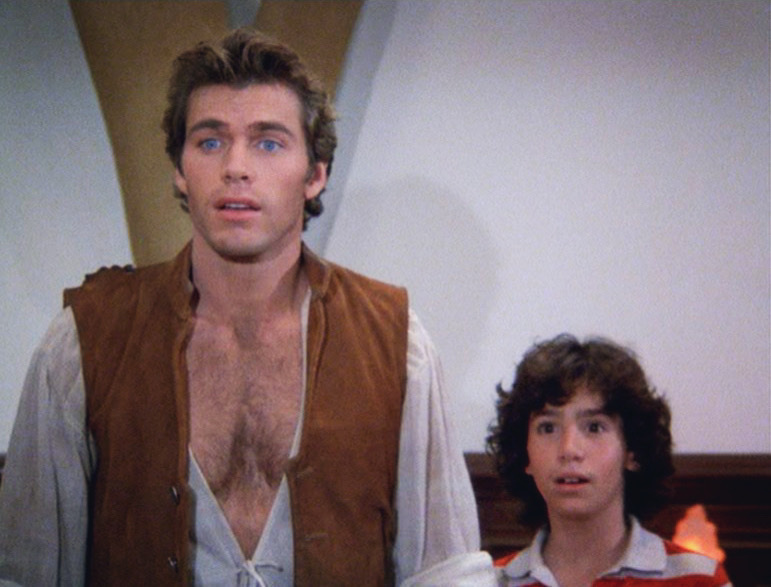 By December 24, 1982, Voyagers! (1982) completed filming “The Trial of Phineas Bogg.” The writers prepared to end the series despite a cliff-hanger with the diabolical Voyager Drake escaping into time. The Voyager Tribunal officially confirmed Jeffrey as a Voyager, and Phineas is cleared of wrong-doing. They’re allowed to remain partners and given a new mission to find Voyager Drake.
By December 24, 1982, Voyagers! (1982) completed filming “The Trial of Phineas Bogg.” The writers prepared to end the series despite a cliff-hanger with the diabolical Voyager Drake escaping into time. The Voyager Tribunal officially confirmed Jeffrey as a Voyager, and Phineas is cleared of wrong-doing. They’re allowed to remain partners and given a new mission to find Voyager Drake.
Things looked grim for Voyagers! (1982). NBC expected to replace it with Monitor as early as December 1982. However, ‘Tis the season when parents look for wholesome, holiday-themed shows. “Merry Christmas, Bogg” was a heart-tugging episode focused on the meaning of family and fit the bill. The ratings improved slightly for the Christmas week. The show came in 71st, followed by ABC’s Ripley’s Believe it or Not (1982) and three other NBC shows – The Devlin Connection (1982), Gavilan (1982), and St. Elsewhere (1982).
After filming the 13th episode and the show’s fate in limbo, Jon-Erik Hexum didn’t resort to worrying and sitting back on his haunches. He began his cross-country efforts to promote Voyagers! (1982), reportedly spending four hours in each city. He knew they wouldn’t beat 60 Minutes (1968) but felt a good show like his could do reasonably well in the same time slot.
“Everyone tells me we don’t have a chance. They say no one’s going to watch us instead of “Dukes of Hazard.” But I’m going to try.”
Jon-Erik wasn’t keen on switching schedules. “Audiences don’t really pay attention. You have to give them a chance to get used to hearing about a show on certain nights. It’s rather ineffective to move them around.”
The actor understood the ins and outs of the TV ratings and numbers game and why Voyagers! (1982) was adversely affected.
“There’s no question “60 Minutes” was our No. 1 problem this season. And if it weren’t for being scheduled opposite them, I’m sure we would have been a reasonable hit. There also seems to have been some problem in targeting our audience because they went out expecting a lot of kids. That audience was more like 50-50, adults, and kids.”
He also felt the fault lay with inaccurate television research. “At 7 o’clock on Sundays, most parents are watching “60 Minutes,” and even though the kids may be watching something different in the den, that constitutes a second set, and it’s not monitored or measured. I’m certain we’re losing a great deal of potential audience just through the numbers game.”
The Voyagers Weigh In
When asked by Sixteen Magazine how he felt about the cancellation, Jon-Erik said, “Terrible! I love Voyagers! and think it’s an entertaining, respectable, and meaningful show. I’m sorry that it was scheduled up against 60 Minutes – the most popular show on television! But if it’s true that Voyagers! is canceled, I will have other projects to work on. Right now, I’m looking at film scripts, and as soon as I choose something, I’ll let you know!”
Jon-Erik Hexum chose not to focus on ratings and put his hopes on TV viewers. “The response has been good. The ratings aren’t really good, but the response has been good.”
“We’ve consistently been in the low 20s instead of having high 20s and low teens.” (This means Voyagers! (1982) had been attracting slightly higher than 20% of the audience watching TV from Sunday at 6 pm.)
Regarding a second season, Jon-Erik said, “Last week, I was 80% sure that NBC would pick us up.”
Jon-Erik Hexum and Meeno Peluce accentuated the positive even if they couldn’t eliminate the negative, namely, 60 Minutes (1968). They felt the sting of rejection as time passed, and the ratings stagnated. The actors kept a good sense of humor. Despite all the backlash and overly critical reviews, they lifted each other’s spirits. It was best to adopt a hope that since Voyagers! (1982) already hit bottom. The only direction it could go was up.
Meeno took the losses in stride, having already survived two canceled shows – The Bad News Bears (1979) and Best of the West (1981).
“I’m trying to help the new kid (Jon-Erik) get through all this.” Meeno quipped.
Jon-Erik took light-hearted jabs at their competition and cracked jokes. “It’s bad enough being opposite “60 Minutes,” but we got off to a tough start when they pre-empted us against an obscure show like the World Series. I hope they give us time to find an audience.”
“What has 60 Minutes got that we don’t have?” Meeno demanded.
“We could’ve put Morley Safer in a guest spot playing Babe Ruth,” Jon-Erik remarked.
“We could probably make it big if they changed the title to “The Meeno Peluce Show,” we’ve got the best series around.” Meeno replied.
“I’m not certain about that. But we do have a lot going for us. The show has educational values with all the historical characters and events we get mixed up with.”
After all the banter, Jon-Erik took a “humble” position about the Voyagers! (1982) predicament and their futures.
“Meeno is very laid back about our ratings problems. If the show’s canceled, he’s such a good actor he’ll go right back into another show. Me? I’ll go back to washing dishes. Maybe Meeno will call and ask me to visit his new show.”
The Final Countdown
Voyagers! (1982) hit the chopping block in May 1983 and officially ended on July 10, 1983. Jon-Erik Hexum didn’t have to wash dishes for long. Five weeks later, ABC called and cast him in Making of a Male Model (1983) opposite glamorous TV superstar Joan Collins. It became a TV hit, and Jon-Erik’s star power rose.
In more ways than one, Voyagers! (1982) had the odds stacked against it.
The rating guidelines changed with many young people tuning out of television altogether. In 1977, a 30 audience share was the minimum for a show’s survival. In 1982, TV shows rated in the 20s were kept on air as long as possible to boost audience growth. The numbers steadily declined. By 1983, 26 or 27 was the new 30, with predictions it’d drop lower. This allowed NBC to juggle Voyagers! (1982) by trying it out on a different day and time slot. Despite averaging a healthy 17 share in viewership, Voyagers! (1982) got canceled. Monitor (1983) was supposed to pull NBC to the top but utterly failed to compete with 60 Minutes (1968) and only lasted one season with a seven share.
Voyagers! (1982) ranked 95th among 99 TV series broadcasts for the 1982-83 television season. 60 Minutes (1968) proved a formidable obstacle, but it couldn’t help being a popular news program at the end of the day.
James Parriott advised a panel of filmmakers in 2009 – “There used to be three major broadcasters. ABC, NBC, CBS. When I started out in the business, you needed a 30 share. You needed at least a third of the viewing audience in order to stay alive as a show. If you didn’t have a 30 the next morning in the ratings, you were done. It was over. Now a five will keep you on the air. Five or six. Cable has taken that number and spread it out a million different ways.”
As of the 2020s, TV share numbers fell dramatically. Many viewers debate how the quality of network television also fell with viewership. An awful TV show with a 2.0 to 2.9 share is now considered acceptable for renewal. Cablevision lost popularity, and Internet streaming shows boomed. The original networks eventually caught on, and they now draw millions of viewers with their streaming app services. The old networks offer a new variety of entertainment and air the TV shows fans grew up with and loved.
Thankfully, Voyagers! (1982) is finally one of them!

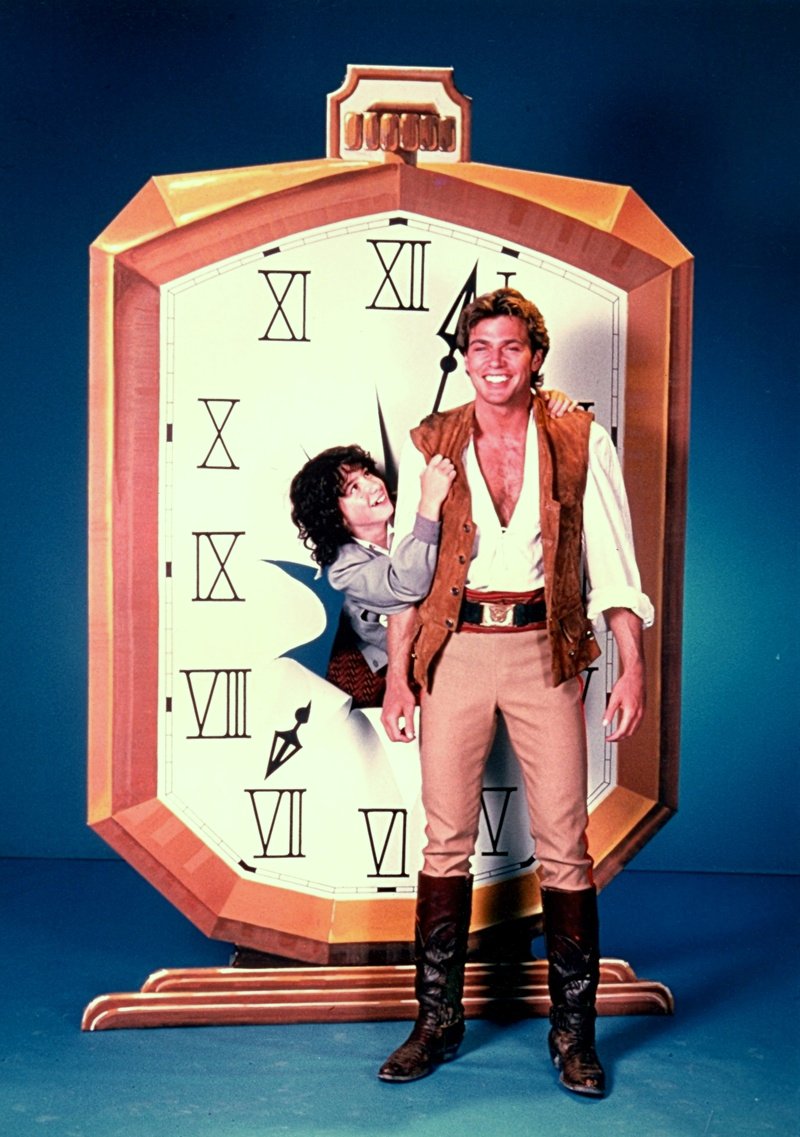
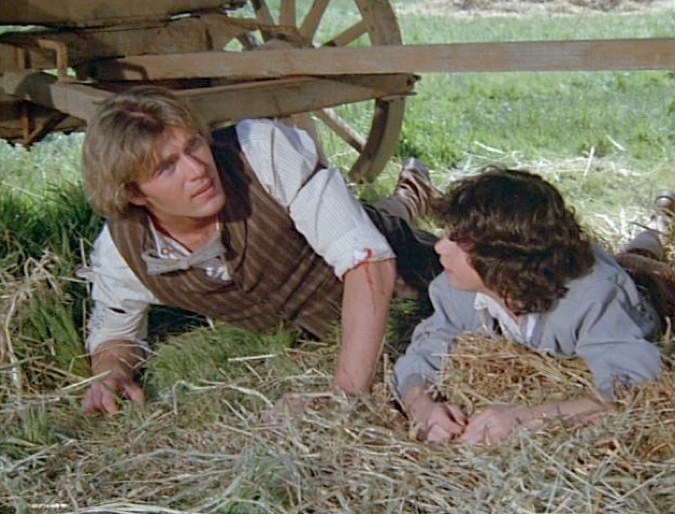


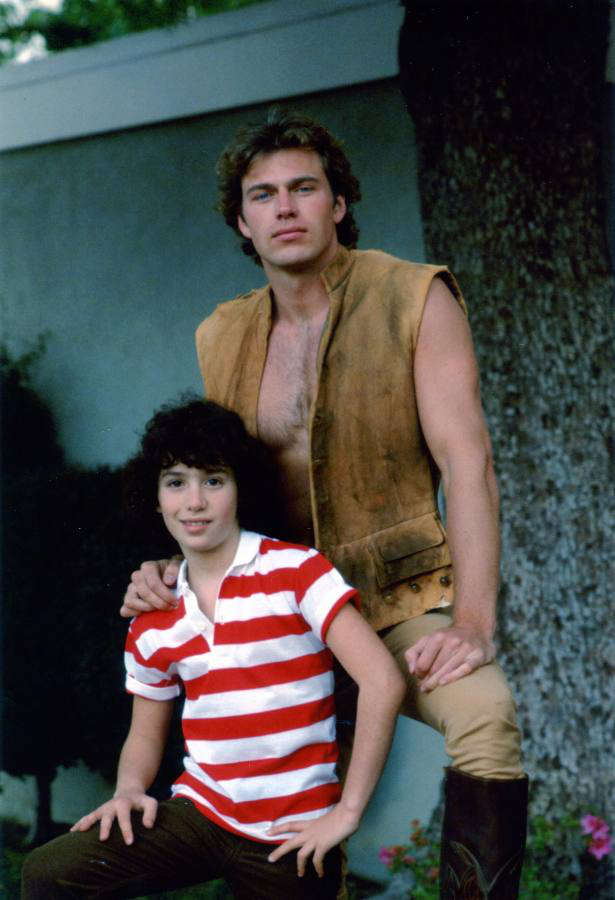
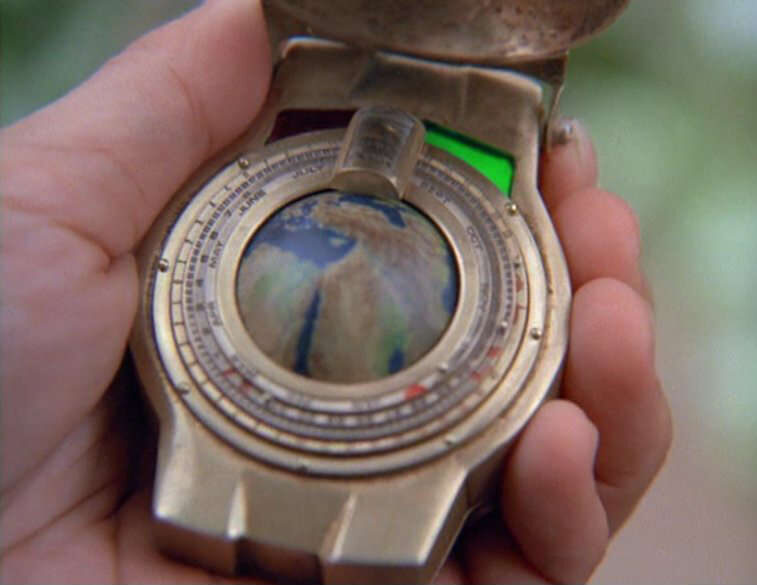
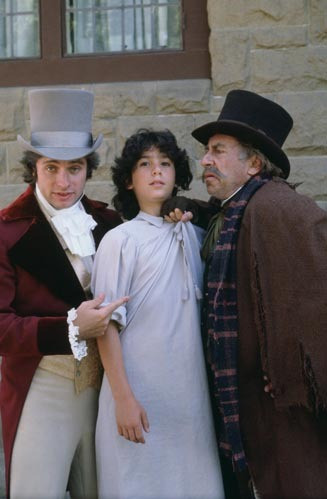

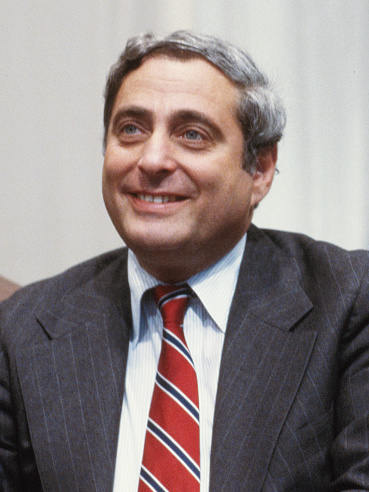
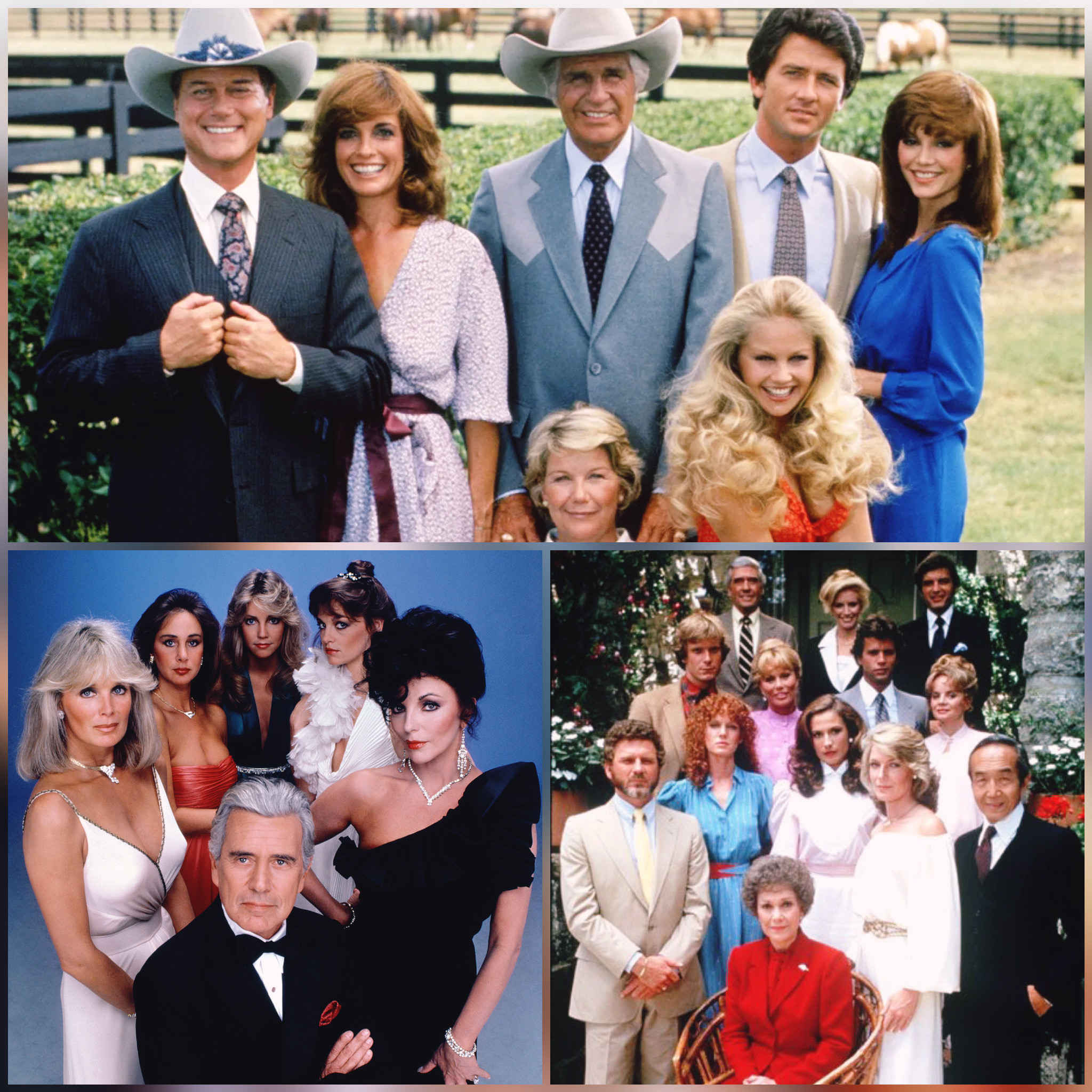
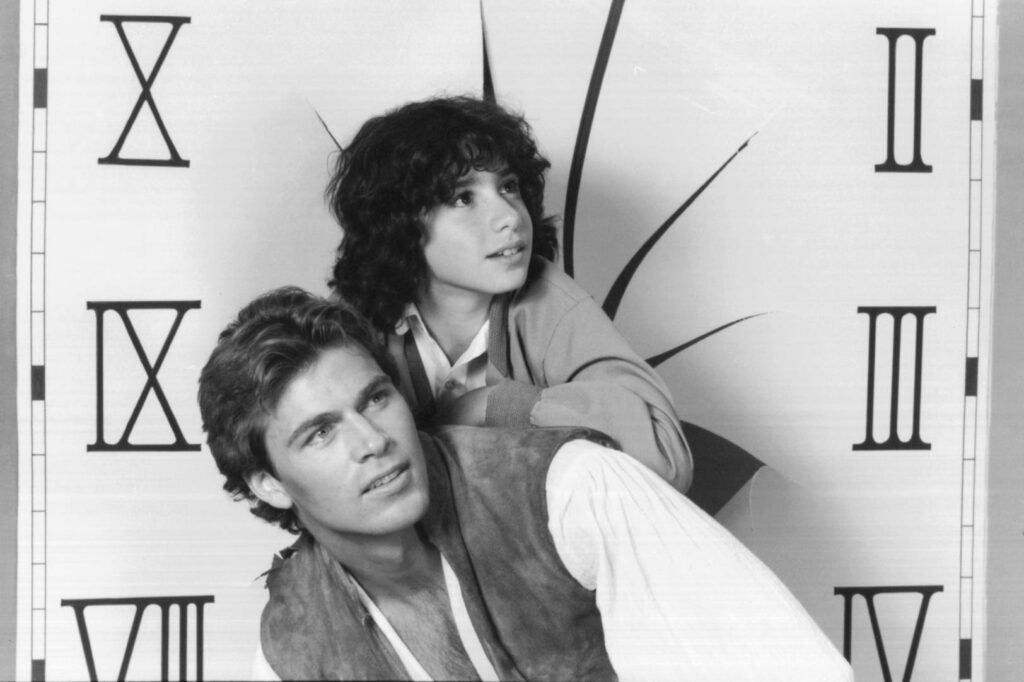
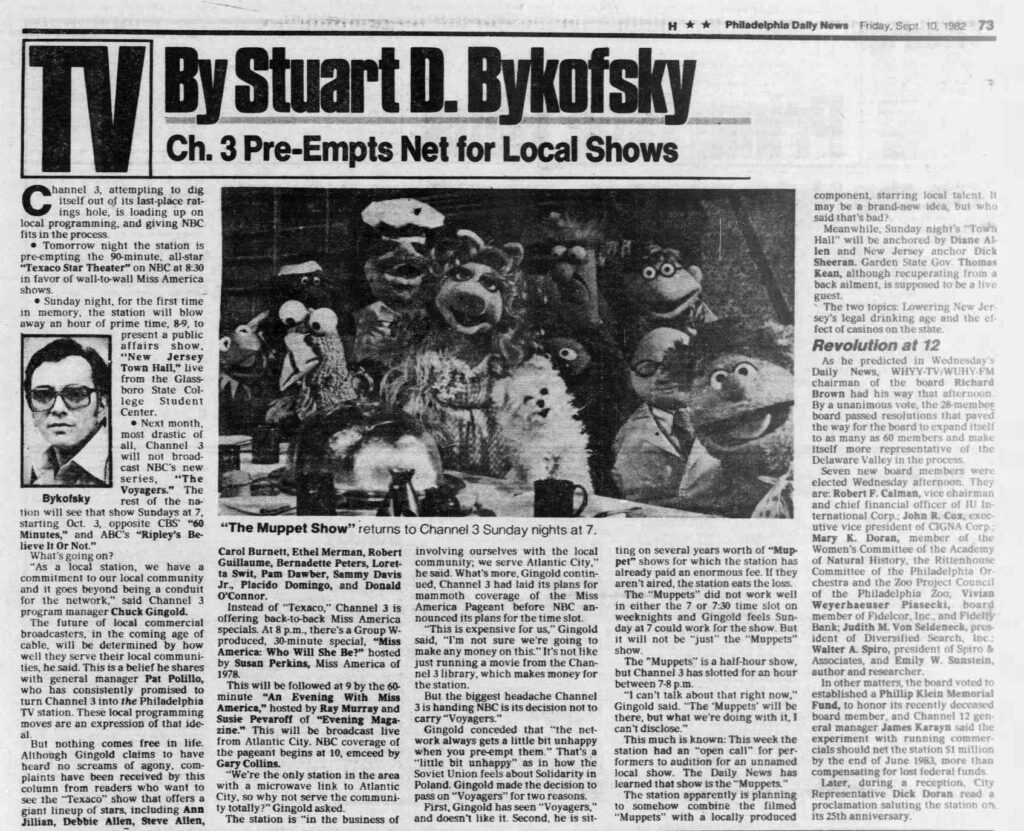
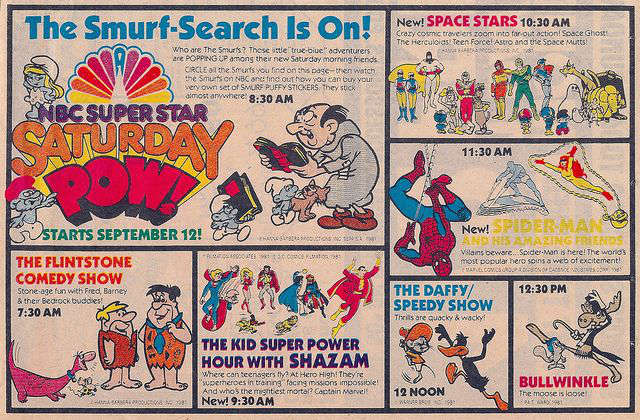

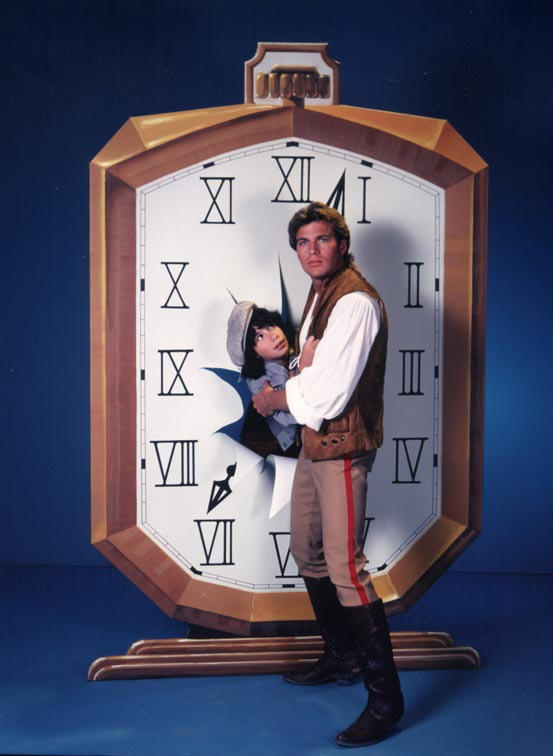
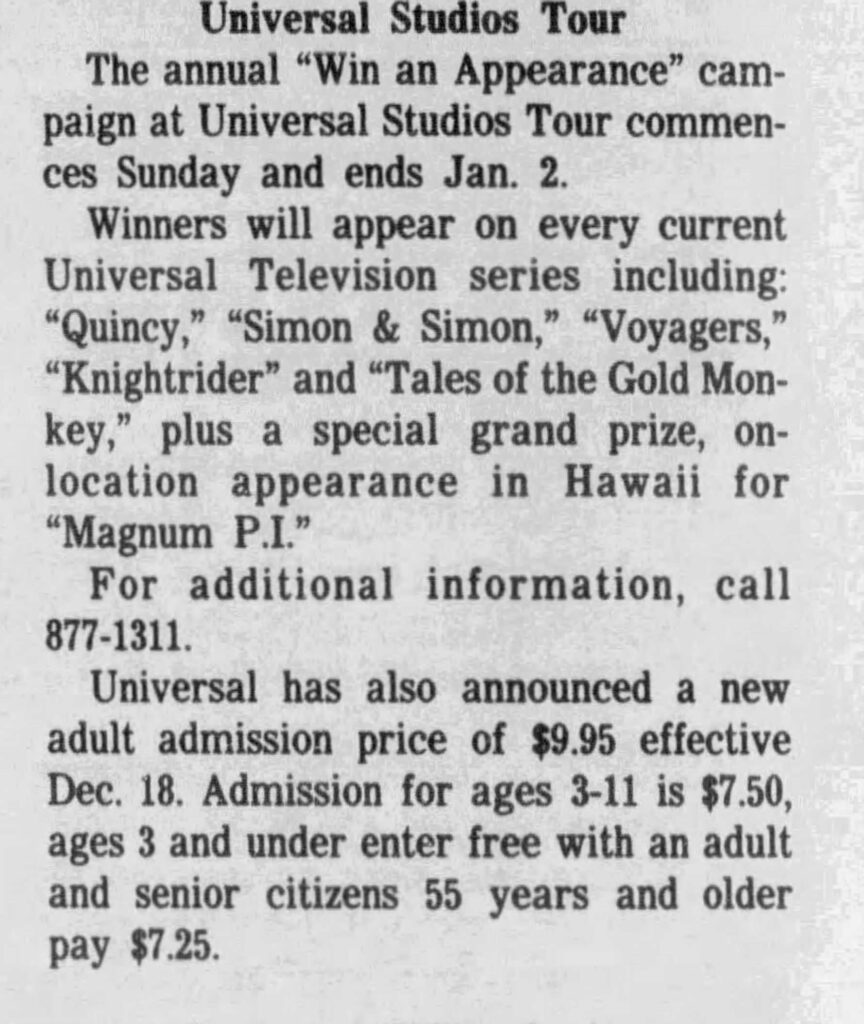




I think that the criticism of Jon -Erik’s acting is not fair, this was his first tv show and he was new to the business. I thought he did a good job and he would get better if Voyagers had been given a chance. The first year of a new series often is not the best ,but they get better as the show and the actors become confident in their work. I always wished another network would have picked it up.Thi was a good article 😊
Hello Emily! Thank you for commenting! I apologize for the late reply. You’re correct. Jon-Erik needed time to grow and he was learning everything he could to improve. I wish Voyagers was given a chance and not so harshly criticized. I imagine Voyagers would’ve also been a good fit for ABC too.